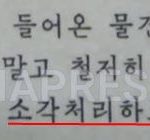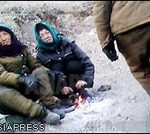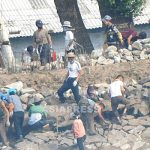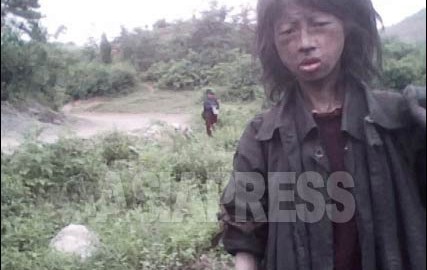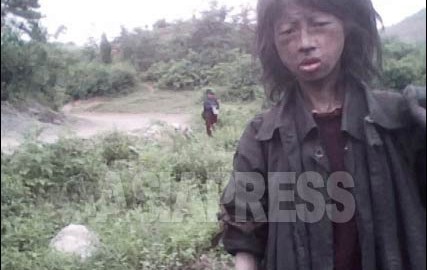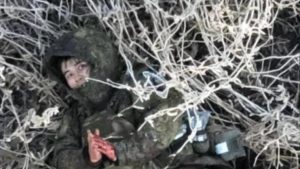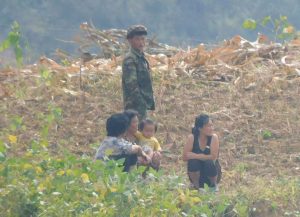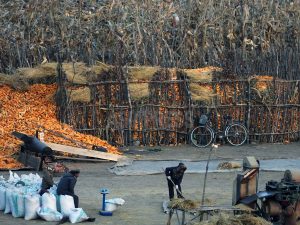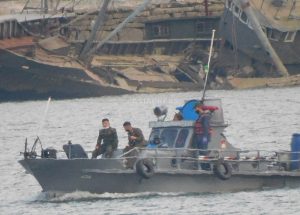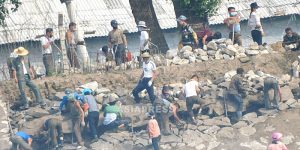
<Lighting Up N. Korea's Four Dark Years> (1) Almost the Only Escape Route -The New Generation ‘Donju’ Who Crossed the Sea Tell About COVID-19, Chaos, and Social Change
As examined in the previous article, North Korean residents were already struggling with desperation due to the government's market suppression policies coupled with border closures, losing their sources of income even before exposure to the coronavirus. The nationwide spread of the coronavirus was another hardship imposed on the people of North Korea. (JEON Sung-jun)
◆ When Did the First Infection Occur?
After closing its borders in January 2020, North Korea never officially acknowledged any confirmed cases of coronavirus until May 12, 2022. However, according to an internal document classified as “top secret” by North Korean authorities and obtained by ASIAPRESS, Kim Jong-un had already acknowledged the entry of coronavirus into the country during the early stages of the pandemic.

On July 25, 2020, at an emergency expanded meeting of the Workers' Party Political Bureau, Kim Jong-un said: "Although we have taken strong emergency quarantine measures nationwide in various aspects over the past six months, we have finally failed to prevent the new coronavirus from entering our territory" and "Our country is now facing a dangerous health crisis situation that is frightening to imagine."
Indeed, three days later, on July 28, ASIAPRESS reporting partners in North Pyongan and North Hamgyong provinces reported receiving information from neighborhood units that infections had occurred in some areas, such as Pyongsong and Sariwon.
<Inside N. Korea> COVID Confession: Local Authorities Notify Public of Rising Coronavirus Cases in 3 Regions, Including Pyongsong and Sariwon
But was it the effect of North Korea's ruthless quarantine control, where people were forcibly isolated for 20 days for cold symptoms without proper testing? Until May 2022, there were only occasional reports of local lockdowns, but no evidence of a nationwide coronavirus outbreak. This seems to have boosted the Kim Jong-un regime's confidence.
In contrast to the extreme caution about the coronavirus in the early stages, Kim Jong-un held a large-scale military parade on April 25, mobilizing some 20,000 troops. Many experts point to this parade as the cause of the May outbreak.
Finally, on May 12, 2022, North Korean authorities officially acknowledged the spread of the coronavirus.
◆ Supply Shortages and Hoarding Cause Drug Prices to Skyrocket
While acknowledging the spread of COVID-19, North Korean authorities simultaneously implemented nationwide isolation measures. However, it appears that the authorities focused on isolating residents and punishing violators rather than providing effective medical support and countermeasures.
"For a month, they completely blocked everything. People couldn't leave their homes at all. Streets and buildings were completely sealed off. I also had COVID at that time, and almost everyone around me was infected," said Kang Gyu-rin.
Kang said that by the time she was infected, the price of medicine had increased tenfold.
"Paracetamol (an antipyretic), which we call P500, used to cost 50 won per tablet, but it went up to 500 won, a tenfold increase. But even then, there were no medicines available. Some people didn't sell medicine because they expected the price to go up 100 times, even though people's lives were hanging by a thread."

Just four days after declaring a nationwide lockdown, on May 16, the Korean Central News Agency reported in detail on Kim Jong-un's anger at judicial and prosecutorial officials, including the head of the central prosecutor's office, for failing to strictly enforce the party's drug supply policy. It seems that hoarding was rampant among those with money, and they were held responsible for failing to prevent it.
The phenomenon of drug hoarding caused the prices of already scarce drugs to skyrocket, exacerbating the suffering of the people.
◆ Residents Drink Willow Brew While the State Profits from Drug Sales
Folk remedies are an important way for North Koreans to cope with poor medical services and drug shortages. But Kang Gyu-rin says government broadcasts, on which North Koreans with relatively little medical information rely heavily, have actually harmed them.
"The broadcast told people to drink water boiled with willow branches, but some people died from drinking too much of it. Later, the state denied ever broadcasting such information."
There is also strong criticism that the authorities' inappropriate response actually increased the pain and suffering of North Koreans. Kim Myung-ok says the authorities administered a paratyphoid vaccine, claiming it was a COVID-19 vaccine.
"What they called COVID-19 vaccine was actually an injection of paratyphoid bacteria. But when people received this injection, they developed high fevers and became more severely ill. After that, people refused to be vaccinated out of fear. An elderly woman who lived downstairs also died from the effects of that vaccination."
Kim emphasized that later, when drugs imported from China were sold through pharmacies at government-set prices, the government profited by selling them at prices higher than the existing market prices.
"Around the end of May (2022), I think the drugs came in. The state sold them at market prices. When I bought glucose to treat patients, something that used to cost 2,200-2,500 won before COVID was now 6,000-7,000 won. But they claimed that this was the price set by the government. The government was basically doing business."
◆ Floundering State, Dying People
In early June 2022, an ASIAPRESS reporting partner provided information about the infection situation and the authorities' response in the northern region. According to the news at the time, the government's only criterion for diagnosing infections was to measure people's temperatures.
"If the temperature is above normal, the person is isolated and cannot leave the house. After about a week, the temperature is taken again, and if the fever has subsided, the person is considered recovered. During the time one is registered as having a fever, all contact is prohibited, including contact with the leader of the neighborhood unit.”
At that time (June 6, 2022), based on the reporting partner's neighborhood unit, there were 6 severely ill patients, 12 recovered patients, and 7 symptomatic individuals, estimated to be about 30-40% of the area's residents.
Neighborhood units (inminban) are North Korea's lowest level of administrative organization, consisting of approximately 20-30 households. They relay instructions from the district (dong) offices, which are the equivalent of South Korea's administrative welfare centers, and are responsible for keeping detailed records of residents' trends and reporting them to the authorities.
Kang Gyu-lin describes the situation: "Many people around us were running out of food, some were dying of starvation; it was just chaos."
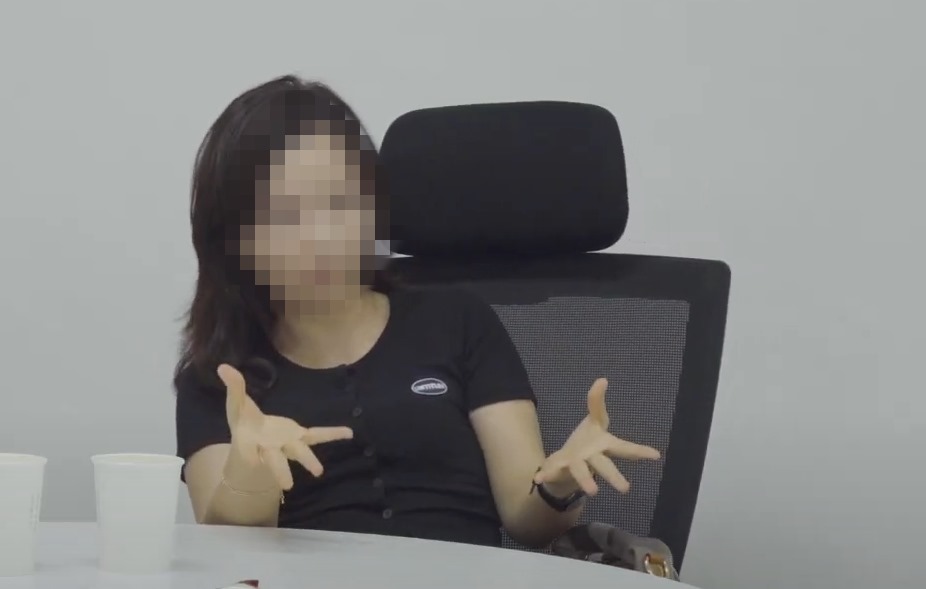
In the absence of adequate food supplies, a nationwide blockade began and continued, killing people who had barely eked out a living from the markets. Since most North Koreans don't have much in the way of savings, either in terms of money or food, people who couldn't survive the lockdown began to show up.
"At first, people thought it would be okay once the lockdown was lifted, but for those who live from day to day, the lockdown went on too long, and they couldn't hold out. So many people sold whatever assets they had to make ends meet. But it seems that not only were the residents struggling, but the state was also struggling a lot."
As residents' suffering increased and casualties mounted, authorities lifted the lockdown on June 12, 2022, a month after implementing the nationwide lockdown. But by then, many victims had already died.
After the month-long nationwide lockdown, the number of people unable to buy food due to lack of cash increased significantly, and with the addition of the COVID-19 aftermath, the number of victims increased even more.
In the next article, ASIAPRESS will examine in detail the aspects of the humanitarian crisis that befell the North Korean people and its causes. (to 6 >> )
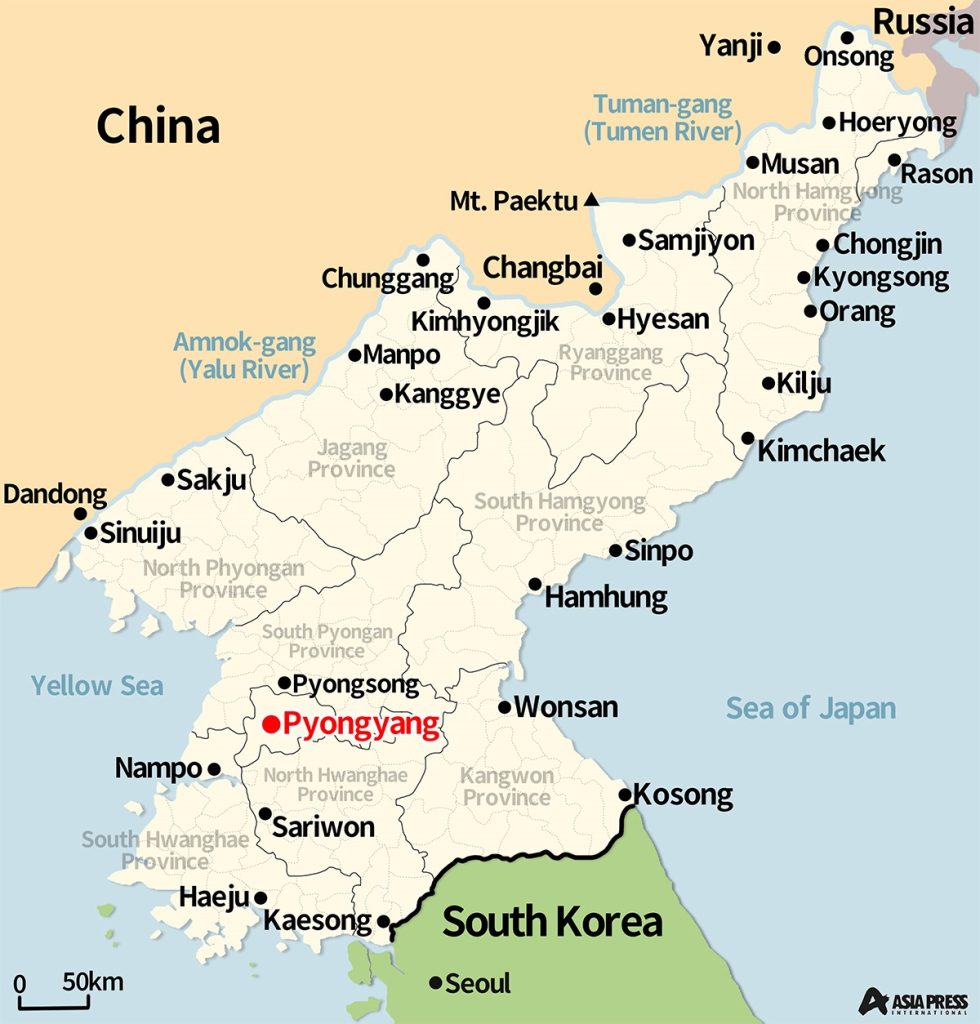
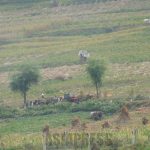
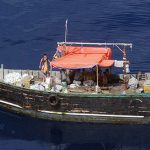
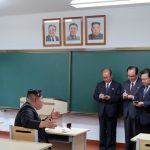
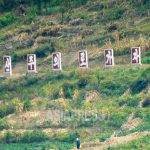
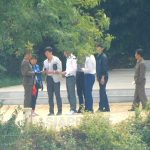
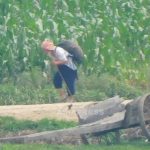
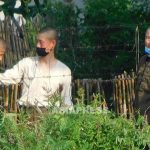
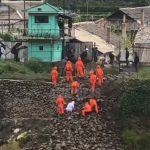

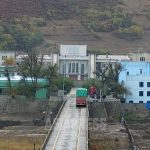
![[Video Report] Parade Drill by Female Students](https://www.asiapress.org/rimjin-gang/wp-content/uploads/2018/07/20130730_yeolbyeongsik_03-150x150.jpg)
